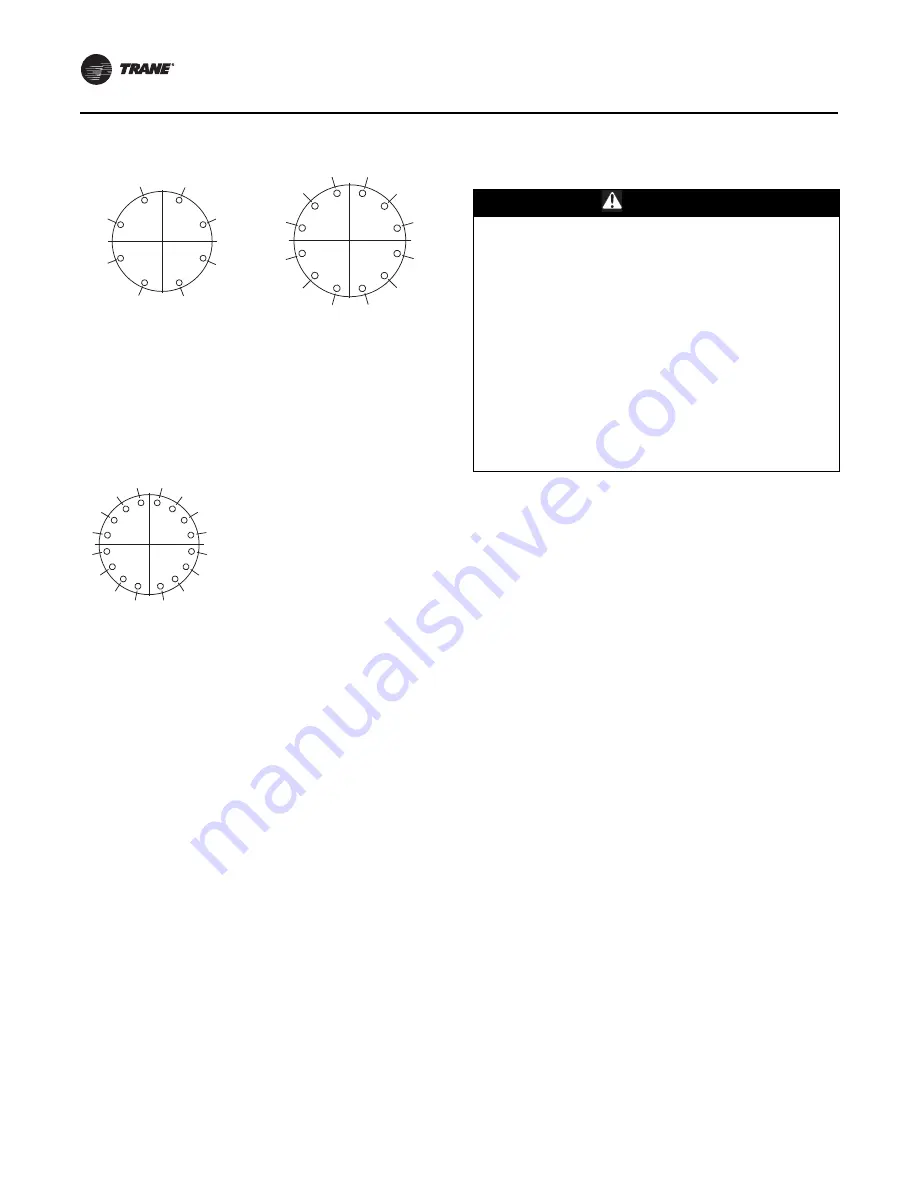
Reassembly
22
CVHS-SVN04E-EN
Flanges with 16 Screws
Tighten only the first half of the total number of screws to
a snug tightness, following the numerical sequence for the
pattern as shown below. Next, sequentially tighten the
remaining half of the screws in numerical order.
Brazing
Except as noted in the following, braze with the following
filler metals:
•
Braze all copper-to-copper joints with A.W.S. BcuP-6
filler metal.
•
Braze all copper-to-brass joints with A.W.S.
BcuP-6
filler metal using white or black brazing flux.
•
Braze all other joints with A.W.S. Bag-28 filler metal.
Bleed dry nitrogen through the lines while brazing to
prevent the formation of oxides which can contaminate
the refrigerant systems.
Note:
Use silver soldering with 96% Sn-4% Ag (for
example, J.W. Harris Co. Stay Brite
®
) to replace
brazing when the heat from brazing would be
detrimental to the immediate or nearby parts.
Examples:
1. Joints next to threaded joints in which the copper or
brass threads become too soft and/or Loctite loses its
sealing capability due to excess heat.
2. Joints next to valves in which the valves cannot be
taken apart or are not recommended for brazing.
1
3
4
5
7
8
2
6
8 screws
1
3
4
10
11
9
5
7
8
12
2
6
12 screws
1
5
9
2
3
4
6
7
8
10
16
15
14
13
12
11
16 screws
WARNING
Hazard of Explosion and Deadly Gases!
Failure to follow all proper safe refrigerant handling
practices could result in death or serious injury.
Never solder, braze or weld on refrigerant lines or any
unit components that are above atmospheric pressure
or where refrigerant may be present. Always remove
refrigerant by following the guidelines established by
the EPA Federal Clean Air Act or other state or local
codes as appropriate. After refrigerant removal, use dry
nitrogen to bring system back to atmospheric pressure
before opening system for repairs. Mixtures of
refrigerants and air under pressure may become
combustible in the presence of an ignition source
leading to an explosion. Excessive heat from soldering,
brazing or welding with refrigerant vapors present can
form highly toxic gases and extremely corrosive acids.



































